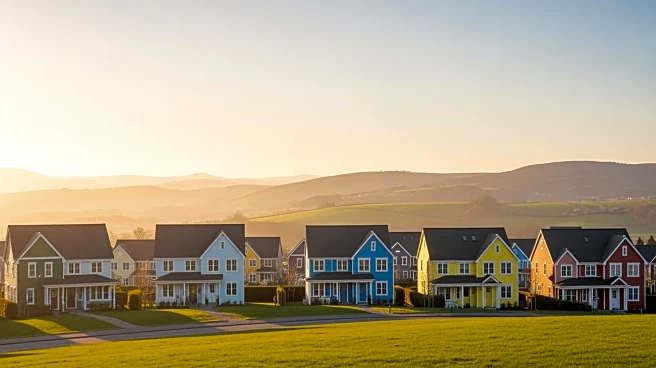What's Happening?
Home prices in the United States are beginning to stabilize, yet they remain high, particularly in urban areas. This trend is exacerbated by near record-high mortgage rates, which have made homeownership
less affordable for many potential buyers. As a result, individuals in Phoenix are increasingly looking to purchase homes outside of expensive urban centers. Data from Realtor.com's Cross-Market Demand Report highlights this shift, showing that potential buyers are exploring areas such as Prescott, Tucson, and Flagstaff in Arizona, as well as cities like Denver, Colorado Springs, and Salt Lake City. These areas are attracting interest due to their relatively lower home prices and the flexibility offered by remote work arrangements.
Why It's Important?
The shift in homebuying patterns reflects broader economic and social changes in the U.S. housing market. High mortgage rates are a significant barrier to homeownership, pushing buyers to seek more affordable options outside major urban areas. This trend could lead to increased development and economic growth in smaller cities and towns, as more people relocate to these areas. Additionally, the ability to work remotely is reshaping residential preferences, allowing individuals to prioritize affordability and quality of life over proximity to urban job centers. This could have long-term implications for urban planning, infrastructure development, and local economies.
What's Next?
As mortgage rates remain high, it is likely that the trend of expanding home searches to less costly areas will continue. This could lead to increased demand in these regions, potentially driving up home prices and altering local real estate markets. Policymakers and urban planners may need to address the infrastructure and service needs of growing communities. Additionally, the real estate industry might see shifts in marketing strategies and investment patterns as developers and agents respond to changing buyer preferences.











